index.html
id="x1-2r1">
E-mail: http://mohsen.banan.1.byname.net/ContactMe
http://mohsen.banan.1.byname.net/Records/20100601 June 1, 2010
Varbatim Copying Permitted Part Outlines
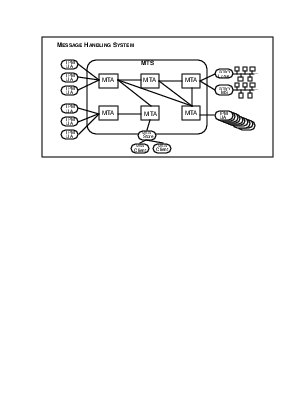
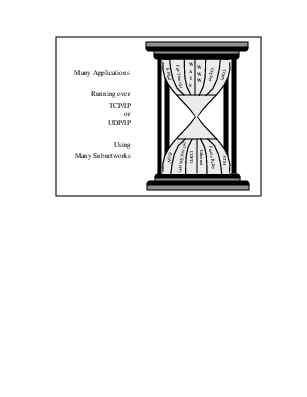
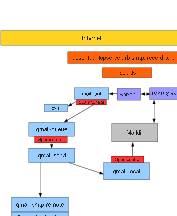
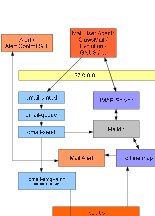
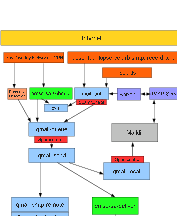
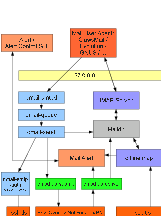
Part V
Five
Less
Taught
Topics in Data Communications University of Washington – EE461 – Spring 2010
Mohsen
BANANTopics in Data Communications University of Washington – EE461 – Spring 2010
E-mail: http://mohsen.banan.1.byname.net/ContactMe
http://mohsen.banan.1.byname.net/Records/20100601 June 1, 2010
Varbatim Copying Permitted Part Outlines
Outline
subsection in toc
subsection in toc
subsection in toc
subsection in toc
subsection in toc
subsection in toc
subsection in toc
subsection in toc
subsection in toc
subsection in toc
What
Are
We
Here
For?
- Who Am I?
- Why Am I Here?
- Why This Class?
- The Next Two Hours
Themes.
- Example of Email/Messaging Through Out
- Multi-Dimensional Perspective (Not Just Engineering)
- Strategic (Not Tactical)
- Technological Inflection Points and Responsibilities of Engineering Profession
- Everything is online
Messaging
Model
and
Terminology

Some
Basic
MHS
(email)
Terminology
Review
Since we are going to use email as the example through out, let’s
quickly review some basic terms.
- Message Handling System (MHS) – interpersonal, non-intrusive, either deliver of bounce
- Message Transfer Agent (MTA), Message Transfer System (MTS) – Examples: Sendmail, qmail, exim, MS-Exchange, ...
- Mail User Agent (MUA) – Examples: MS-Outlook, pine, Gnome’s Evolution, Emacs’ Gnus, ...
- WebMail – A Web Based MUA
- Message Delivery – email is put in your mailbox or pushed to MUA
- Message Submission – Sending email
- Message Retrieval – Example: imap
Part
I:
End-To-End
Argument
Relevant
Literature.
-
End-to-end
Arguments
in
System
Design
http://web.mit.edu/Saltzer/www/publications/endtoend/endtoend.pdf -
Rethinking
the
design
of
the
Internet:
The
end
to
end
arguments
vs.
the
brave
new
world
http://www.csd.uoc.gr/ y558/papers/Rethinking_2001.pdf
y558/papers/Rethinking_2001.pdf
-
The
Rise
of
the
Middle
and
the
Future
of
End-to-End.
http://www.ietf.org/rfc/rfc3724.txt -
Tools
for
Conviviality
-
Ivan
Illich
https://clevercycles.com/tools_for_conviviality
E2E
Paper
Key
Point
1
The
end
to
end
arguments
suggest
that
specific
application-level
functions
usually
cannot,
and
preferably
should
not,
be
built
into
the
lower
levels
of
the
system
–
the
core
of
the
network.
Because,
the
function
in
question
can
completely
and
correctly
be
implemented
only
with
the
knowledge
and
help
of
the
application
standing
at
the
endpoints
of
the
communications
system.
Therefore,
providing
that
questioned
function
as
a
feature
of
the
communications
systems
itself
is
not
possible.
E2E
Paper
Key
Point
2
Even if parts of an application-level function can potentially be
implemented in the core of the network, the end to end
arguments state that one should resist this approach if
possible. Advantages of moving application-specific functions
up out of the core include:
- The complexity of the core network is reduced, which reduces costs and facilitates future upgrades to the network.
- Generality in the network increases the chances that a new application can be added without having to change the core of the network.
- Applications do not have to depend on the successful implementation and operation of application-specific services in the network, which may increase their reliability.
E2E
Paper
Key
Point
3
The
most
important
benefit
of
the
end
to
end
arguments
is
that
they
preserve
the
flexibility,
generality,
and
openness
of
the
Internet.
Movement
to
put
more
functions
inside
the
network
jeopardizes
that
generality
and
flexibility
as
well
as
historic
patterns
of
innovation.
A
new
principle
evident
already
is
that
elements
that
implement
functions
that
are
invisible
or
hostile
to
the
end
to
end
application,
in
general,
have
to
be
“in”
the
network,
because
the
application
cannot
be
expected
to
include
that
intermediate
element
voluntarily.
Engineering
Summary.
- Generally speaking E2E is More Robust
- Dumb Pipe – Honest Pipe (Net Neutrality) – Intelligent Ends
- Care should be taken in identifying the ends
- Not at all absolute – Context of Problem Domain Trumps Principle
- Consider Business Dimensions
- Consider Other Than Business and Engineering Dimensions
Email(SMTP)
vs
Texting
(SMS)
–
E2E
vs
In-The-Core.
- Email (SMTP) two ends – for E2E purposes
- Texting (SMS) two ends – for E2E purposes
- SMTP MUA Diversity/Choice Vs Texting MUA Diversity/Choice
- SMTP MUA Privacy Vs Texting MUA Privacy
- SMTP Reliability Vs Texting Reliability
- SMTP Spam Vs Texting Spam
- SMTP User Autonomy Vs Texting User Autonomy
- SMTP Cost Vs Texting Cost
End-to-End
(E2E)
and
Network-Address-Translators(NTAs)
- Network-Address-Translators(NTAs) are kind of like diodes – one-way
- Was half of the E2E Argument lost when NATs came in?
- Walled Gardens – NATs and E2E
Illich’s
Concept
of
Convivial
Tools
Tools
are
intrinsic
to
social
relationships.
An
individual
relates
himself
in
action
to
his
society
through
the
use
of
tools
that
he
actively
masters,
or
by
which
he
is
passively
acted
upon.
To
the
degree
that
he
masters
his
tools,
he
can
invest
the
world
with
his
meaning;
to
the
degree
that
he
is
mastered
by
his
tools,
the
shape
of
the
tool
determines
his
own
self-image.
Convivial
tools
are
those
which
give
each
person
who
uses
them
the
greatest
opportunity
to
enrich
the
environment
with
the
fruits
of
his
or
her
vision.
Industrial
tools
deny
this
possibility
to
those
who
use
them
and
they
allow
their
designers
to
determine
the
meaning
and
expectations
of
others.
Most
tools
today
cannot
be
used
in
a
convivial
fashion.
Was:
E2E
Argument
–
Now:
The
Autonomous
Services
Argument.
- End-to-End system perspective is yesterday’s topic
- System Perspective vs Service Perspective
- More and More Software is becoming Service
- Central Model vs (Autonomous+Federated Model)
- Central Service Model is profit driven and is counter to autonomy – We have no alternative to Facebook (other than not participating). It is a loosing game.
Facebook
is
Very
Central
and
Very
Much
non
E2E
–
What
Are
We
To
Do?.
- Create a Viable Alternative Model
- Cultivate it Collaboratively
- I Call It: “The Autonomous Libre Services Argument”
The
Autonomous
Libre
Services
Argument.
- Definition: An Internet Service is the capability of running Internet connected software
- Definition: Internet Service is Autonomous, when it is completely
at your behest
- To be Autonomous, it must be a LIBRE SERVICE (requirements of transparency at source code level + reproducibility results in copyleft)
- To be Autonomous, service context needs to be PORTABLE. (e.g., take your entire Facebook context and move it to a different provider.)
- To be Autonomous, the service provider must comply with NON-RETENTION of data and service termination at your behest
- Autonomous Services interact with other Autonomous Services directly. (End-to-End).
- Federated Services, operate on public information and on deligated Autonomous Service information segments.
Part
II:
Characteristics
of
Successful
Protocols
Relevant
Literature.
- Lessons from History of Protocols: Comparative Case Studies http://www.freeprotocols.org/PLPC/100017
- What Makes For a Successful Protocol? http://www.faqs.org/rfcs/rfc5218.html
Mentioned
Success
Factors.
- Positive Net Value (Meet a Real Need)
- Incremental Deployability
- Open Code Availability
- Freedom from Usage Restrictions (Patents)
- Open Specification Availability
- Open Maintenance Processes
- Good Technical Design
- Extensible
- No Hard Scalability Bound
A
Protocol’s
Position
in
The
Protocol
Hour
Glass

Other
Success
Factors.
- Leader’s Execution Sophistication (Technology, Social, Business)
- Leader’s Stamina
- Inclusion In Distros
- Initial Service Inclusion
- The Basic Nature of Protocol (Position in Hour Glass + ...)
Part
II:
Patents
and
Protocols
Relevant
Literature.
- The Free Protocols Foundation Policies and Procedures http://www.freeprotocols.org/PLPC/100201
- IETF Policy – http://www.ietf.org/ipr/
- IETF Page of Intellectual Property Rights Disclosures – https://datatracker.ietf.org/ipr/
- “The WAP Trap” – http://www.freeprotocols.org/PLPC/100014
What
Are
Protocols?
–
What
Are
Patents?
- What Are Protocols: Expected Behavior – Consider a sneeze
- What Are Patents: Exclusive rights to a process – Assignment of Ownership to Knowledge – Restriction on Applying Knowledge
- The Patent Controversy
How
Patents
Fit
Into
Protocols
Patents
are
applied
to
software,
not
to
protocols.
It
is
not
possible
to
patent
a
protocol;
in
general
only
a
process
or
an
algorithm
can
be
patented.
However,
a
protocol
may
include
a
patented
algorithm
as
an
integral
part
of
its
specification.
In
this
case,
any
software
implementation
of
the
protocol
requires
the
use
of
patented
software.
That
is,
a
patented
process
is
an
inherent
part
of
the
protocol.
Even
if
a
protocol
does
not
explicitly
decree
the
use
of
a
specific
patented
software
process,
it
may
still
be
the
case
that
any
practical
implementation
of
the
protocol
requires
the
use
of
patented
software
components.
The
protocol
could
in
principle
be
implemented
in
a
way
which
avoids
the
use
of
patented
software;
in
practice,
however,
the
result
would
be
a
significantly
inferior
implementation,
for
example
in
terms
of
efficiency.
How
Patents
Fit
Into
Protocol
Dev-elopement
Process
- Standard Processes (IETF/3GPP/WAP/W3C/...) don’t all view patents and protocols the same way.
- WAP was Patented – See “The WAP Trap” – http://www.freeprotocols.org/PLPC/100014
- Standards track ietf protocols are intended to be and remain patent free
- Participation in Working Group, requires declaration of patents
- After Patent Declaration, usually comes a license available on fair, reasonable and non-discriminatory (“FRAND”).
- One Big Silly Game!!!
The
Patent
Controversy
- I am against patents
- http://mohsen.banan.1.byname.net/PatentAssassin
- Stallman and Knuth are against patents
- Microsoft and Apple are in favor of patents
- The existence of the patent debate is understandable in the industry but not in academia
- Pursuit of knowledge is in conflict with ownership of knowledge
- “Nature of Poly-Existentials as the Basis For or Abolishment of The So-Called Intellectual Property Rights Regime” http://mohsen.banan.1.byname.net/PLPC/120033
Part
IV:
The
Correct
Ultimate
Protocol
Implementation
Relevant
Literature.
- Program design in the unix environment – Rob Pike gaul.org/files/program_design_in_the_unix_environment.ps
- qmail – http://cr.yp.to/qmail.html
What
Is
Correct
Ultimate?
- Dimensions of Correct – Be Conformant, Be Robust, Watch after my interests
- Dimensions of Ultimate – Superior to all peers
MTA
Comparisons
–
qmail
my
choice
of
ultimate
MTA.
- qmail vs Sendmail vs Exchange vs Postfix vs Exim http://shearer.org/MTA_Comparison
- Linux Modules and Protocol Layers
The
Robustness
Principle.
Be liberal in what you accept, and conservative in what you
send
Software
should
be
written
to
deal
with
every
conceivable
error,
no
matter
how
unlikely;
sooner
or
later
a
packet
will
come
in
with
that
particular
combination
of
errors
and
attributes,
and
unless
the
software
is
prepared,
chaos
can
ensue.
In
general,
it
is
best
to
assume
that
the
network
is
filled
with
malevolent
entities
that
will
send
in
packets
designed
to
have
the
worst
possible
effect.
Unix
Philosophy.
- Write programs that do one thing and do it well.
- Write programs to work together.
- Write programs to handle text streams, because that is a universal interface.
- Small is beautiful.
- Allow the user to tailor the environment.
- The sum of the parts is greater than the whole.
The
Right
qmail
Server
Configuration

The
Right
qmail
Autonomous
Client
Configuration

qmail
Server
Configuration
Expanded
for
Mobile
Email

qmail
Autonomous
Client
Configuration
Expanded
for
Mobile
Email

Part V
Part
V:
Some
Acknowledged
and
Some
Unacknowledged
Internet
Errors
IP
Address
Exhaustion.
- NATs as a side-effect – NATs are quite evil
- E2E deteriorated as a result
- IPv4 to IPv6 – Why has it taken so long?
Longer
Term
Ramifications
of
Simple
Protocols.
- Roughly 90% of email traffic is spam (2009, 2010)
- A culture of patching (flexibility and extendability or patched errors?)
- Insecure protocols and insecure implementations has lead to a lofty Firewall, anti-malware, anti-spam and phishing protection software industry
Domain
Name
Notation
Is
Backwards.
mailto:desk@hommer.1.simposon.byname.net
should have been
mailto:net.byname.simposon.1.hommer@desk
- Numbers: Most significant digit is to the left
- Phone Numbers: From left to right – country code, area code, exchange, number
- File System: General to specific from left to right – /var/qmail/control/virtualdomains
- Programming Languages: General to specific from left to right – employee.age=22
Colophon
- Totally Libre and Copyleft
- No proprietary software used in preparation, presentation and communication of this information
- Slides prepared with beamer-latex
- Presented using Ubuntu-Debian-GNU-Linux and Maemo on PDA
- Served as an Autonomous Libre Service using Debian, Apache, Plone, ...
Questions/Comments/Discussion